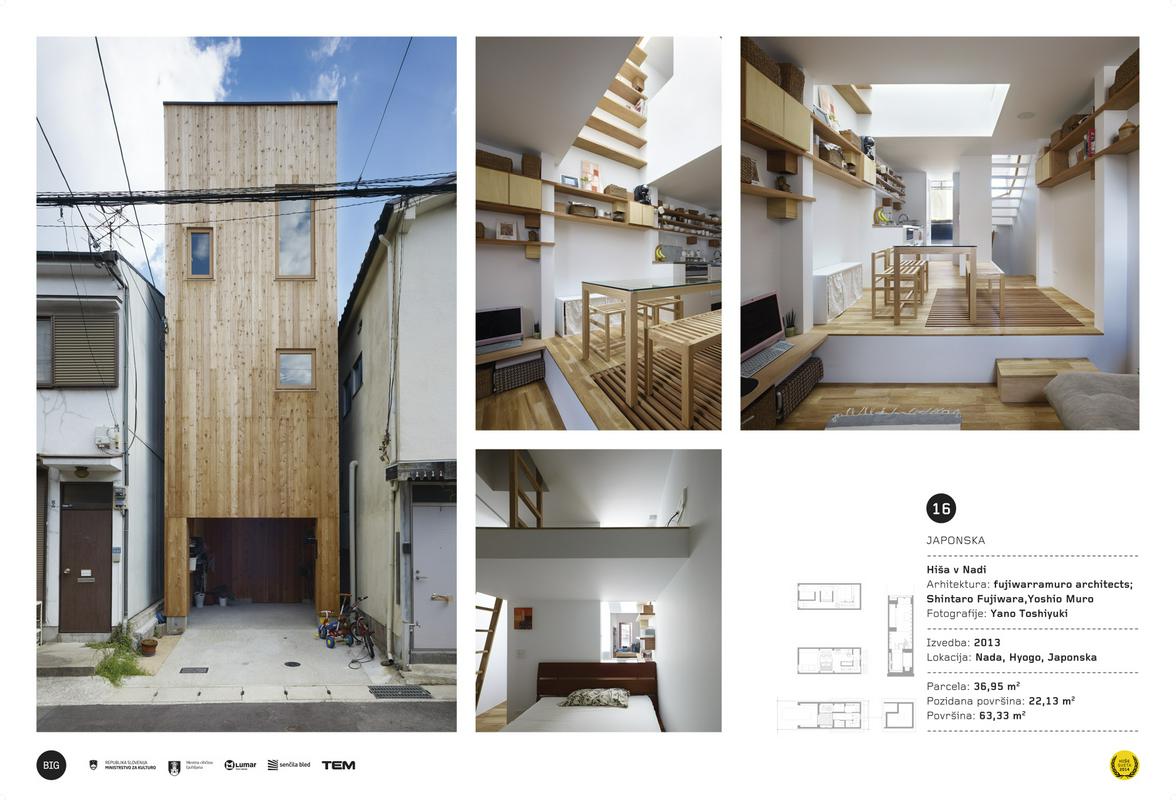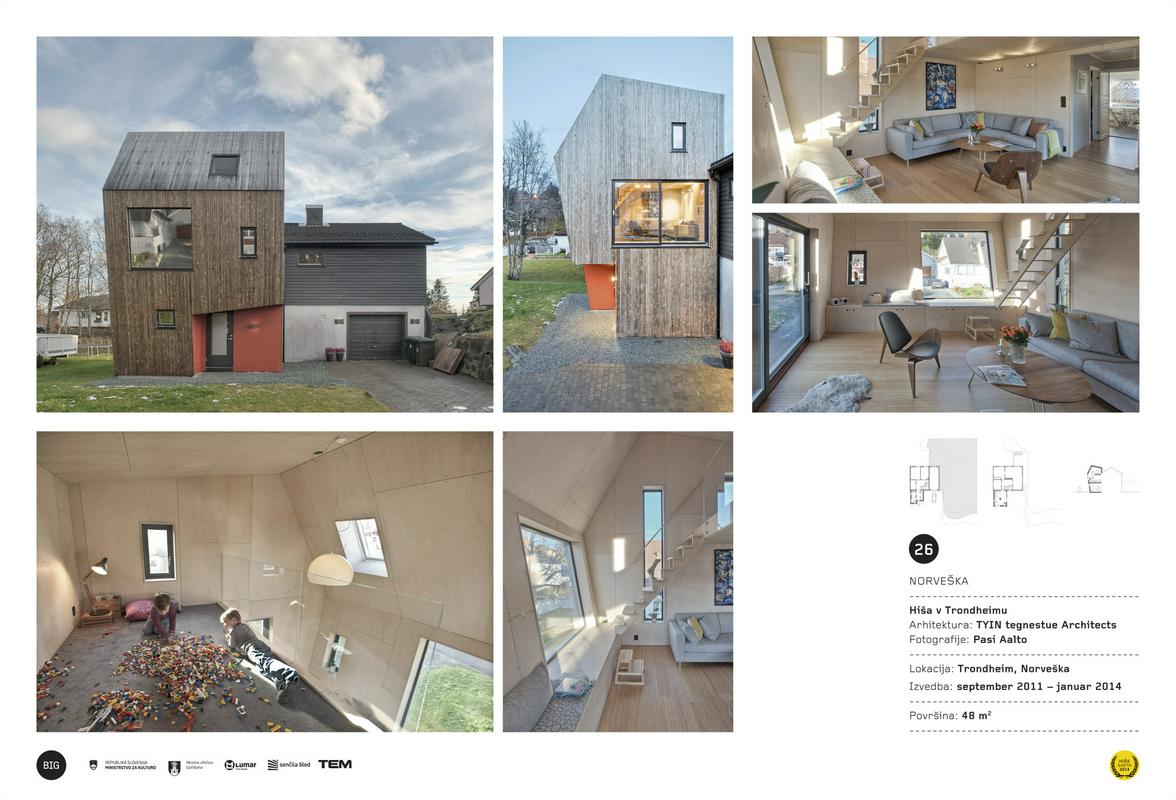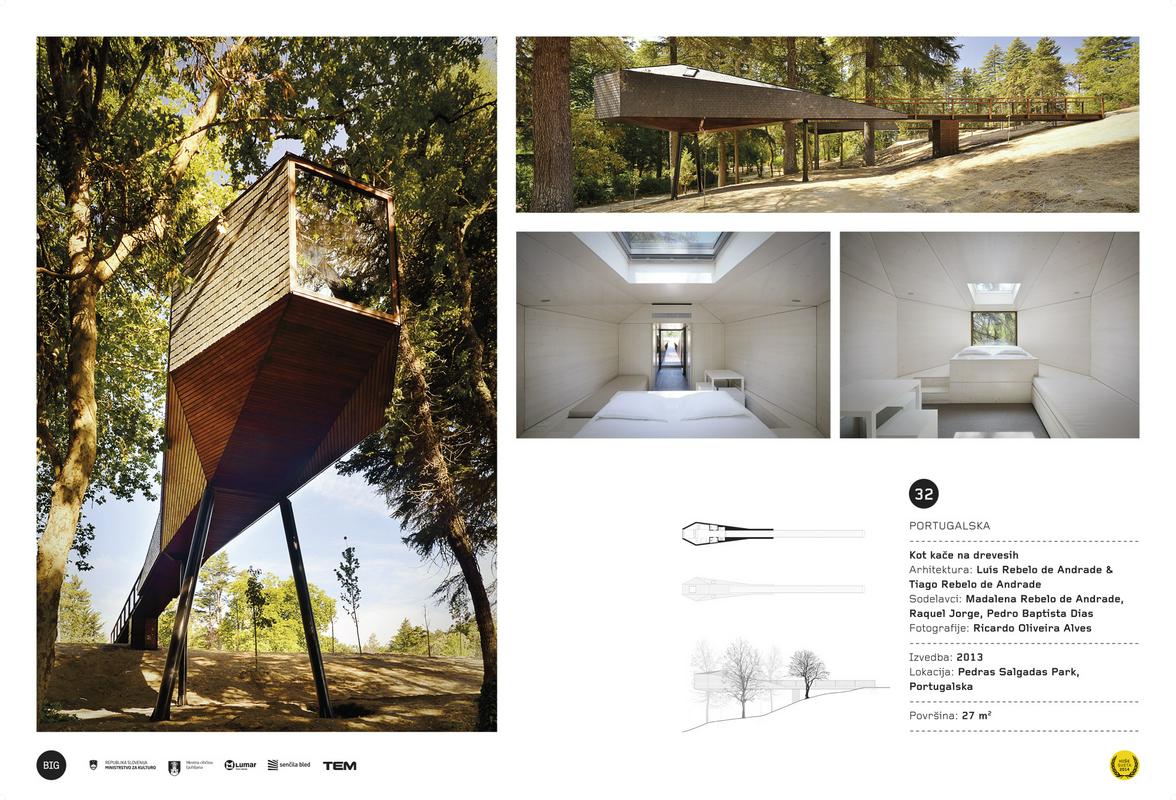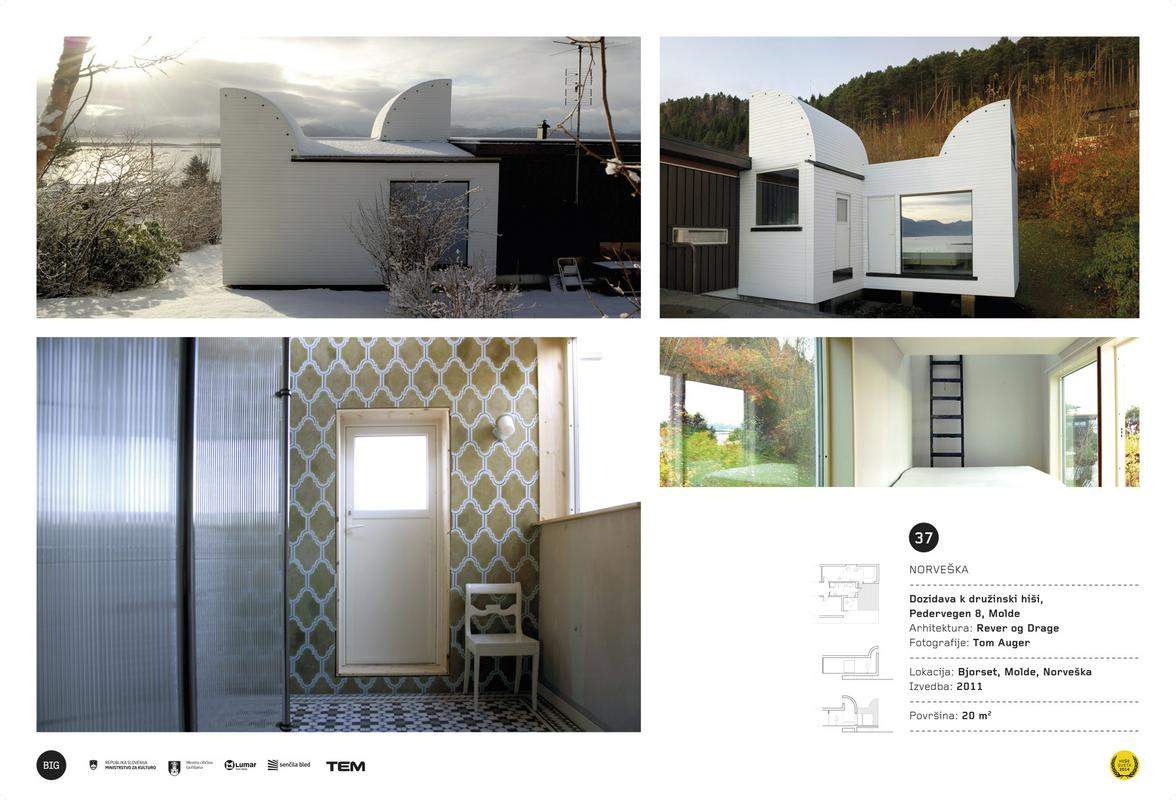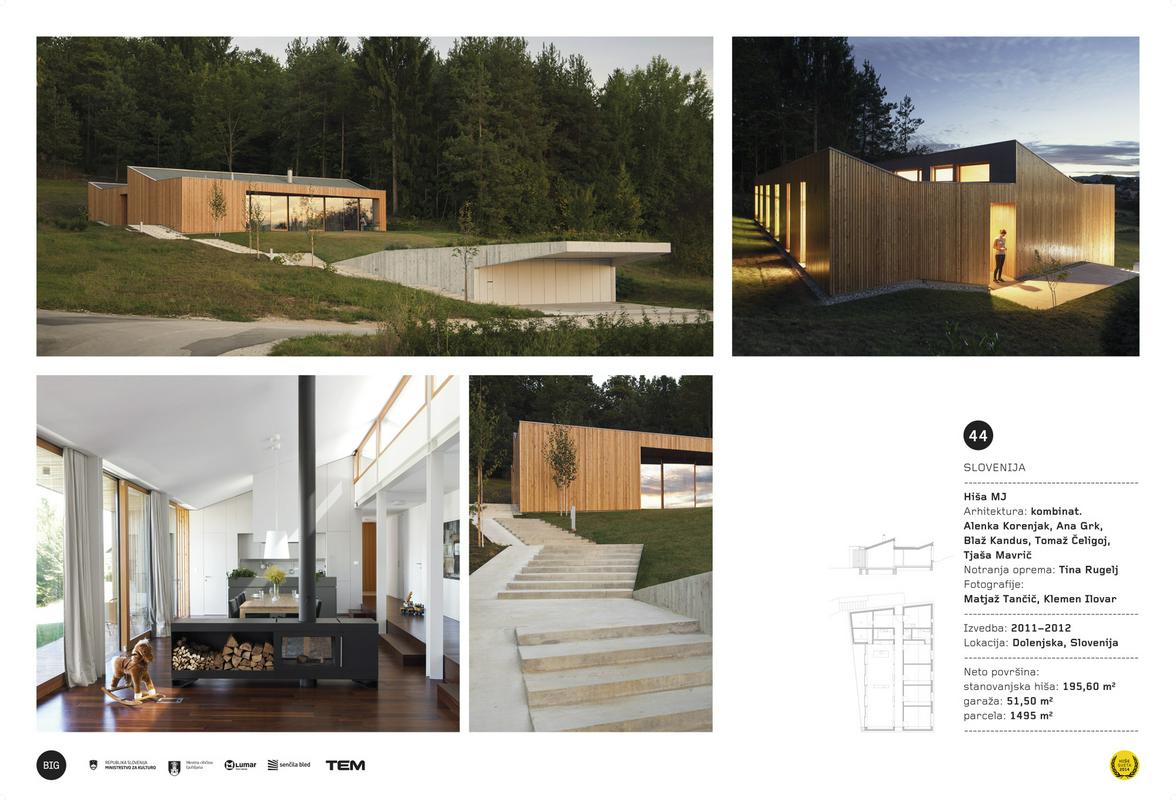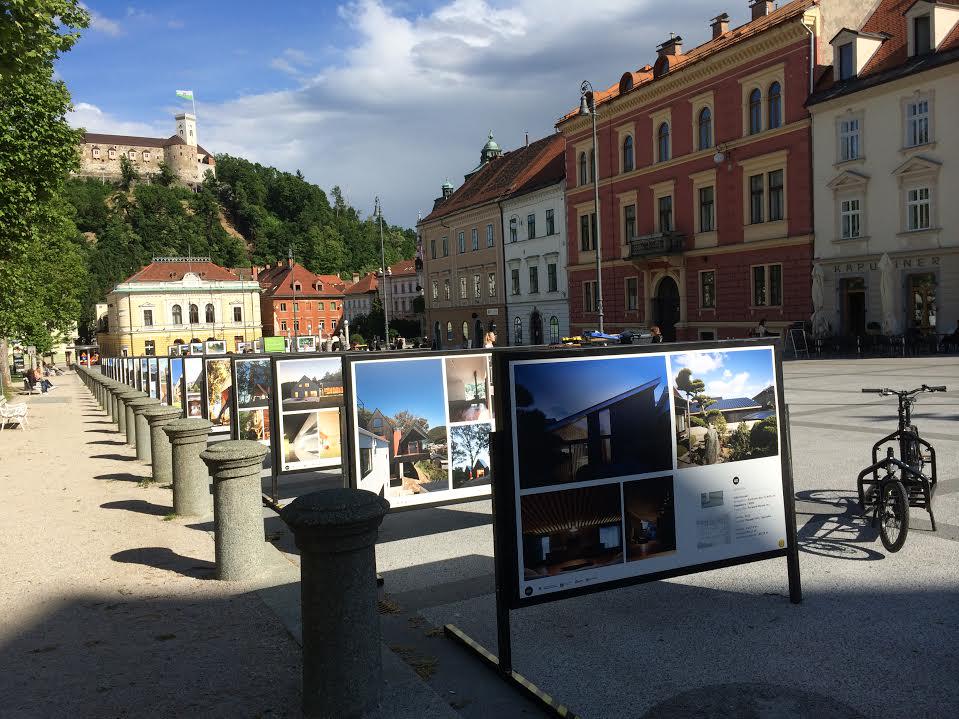
Public awareness is the primary condition for a beautiful residential environment, and consequently a quality cultural landscape.
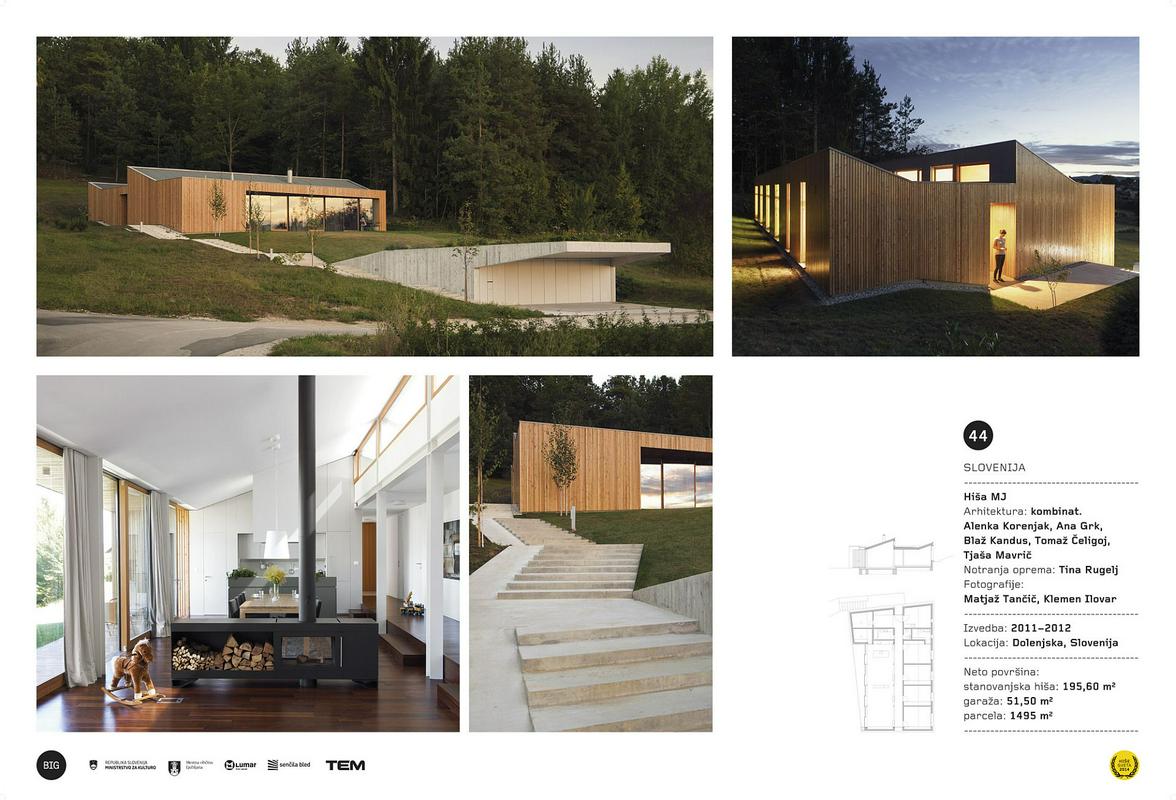
The message on the importance of wood in Slovenia is of utmost importance. Our country is lucky, it is well placed both geographically and culturally.
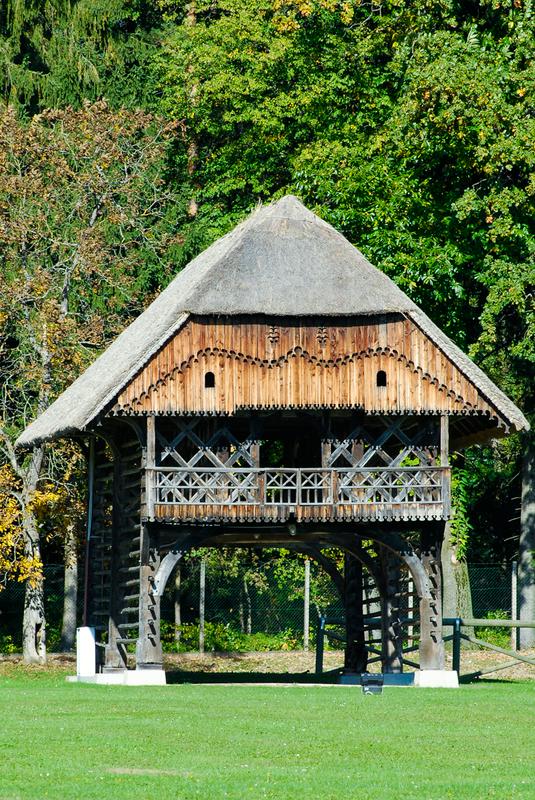
In February of this year the Slovenian forests were heavily affected by sleet. Consequently we have an enormous quantity of wood at our disposal. It can be processed and used in architecture or design. The second option we have is to wait for the bark beetle epidemics, which would deal with wood and ruin an additional portion of the forests.
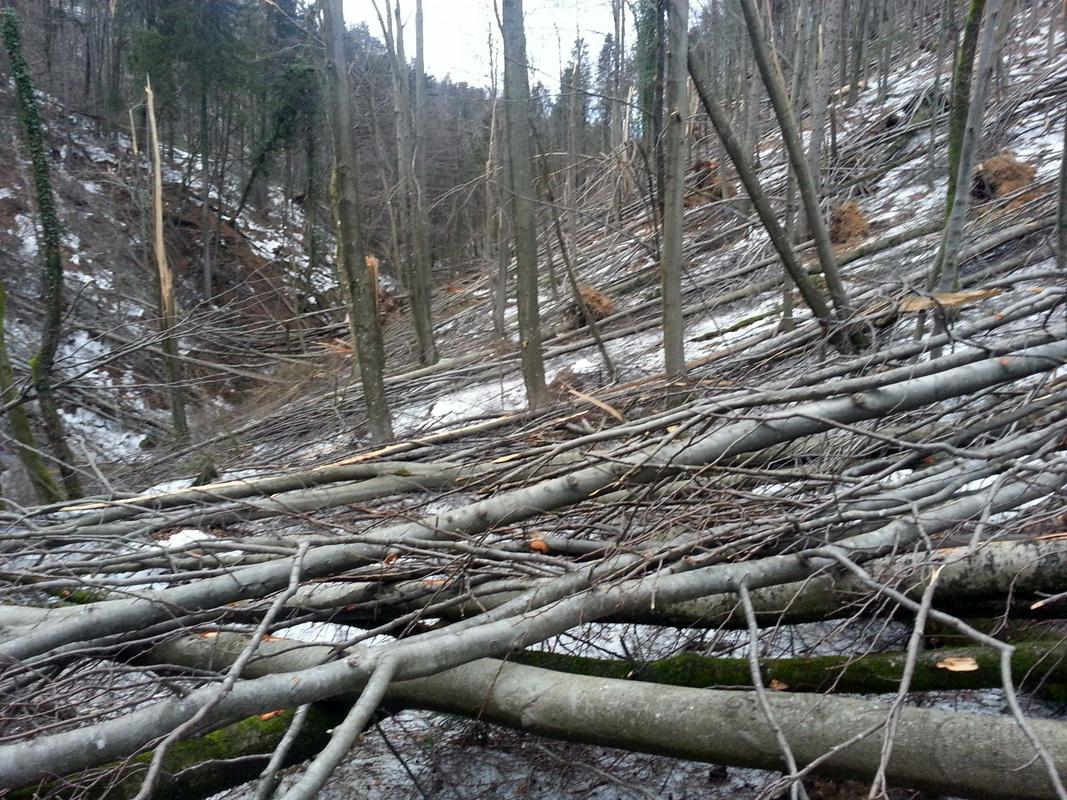
"We organize the exhibition Houses of the World yearly, as we wish to bring the modern architecture near to as many people as possible. Architectural magazines are limited to a narrow group of readers. It is our wish to present the diversity of residential architecture especially to those who do not deal with architecture, neither as amateurs nor professionally. Public awareness is the primary condition for a beautiful residential environment, and consequently a quality cultural landscape," said Nina Štrovs, the exhibition curator – the exhibition will be open until June 15 – and editor-in-chief of Hiše Magazine, for MMC.
On June 5 in the Kubus shop at the Congress square short lectures will be held, and a conference on wood-inspired architecture. The guests from Slovenia will be joined by the Spanish architects FRPO, and the Austrian architectural bureaus Juri Troy and Judith Benzer. At that occasion the award for the most beautiful house chosen by the public will be presented. "I am really interested in seeing the difference between the public choice, and the decision of the expert jury. We are especially welcoming those people who do not deal with architecture professionally – the entrance is free. Each of them will be very welcome!" continues Štrovs.
_______________________________
Why wooden houses?
The message on the importance of wood in Slovenia is of utmost importance. Our country is lucky, it is well placed both geographically and culturally. It lies next to Italy, which is the world power in industrial design of wood. Our neighbour is also Austria, among the best in the world in use of wood in architecture. Thus we are close to the strongest players, enough of raw material is available, we have the necessary knowledge – but we lack in strategy and systematic management in order to take full advantage of the wood at our disposal. Perhaps one of the reasons is the fact that our economy is still very young. We also still need to establish a strong cultural identity of Slovenia.
What were the criteria for selecting 45 most beautiful houses to classify for the exhibition?
This year we limited the exhibition to wooden houses. Therefore, the first condition was the use of wood, either as a construction element, as facade panelling, for finalization of interior walls, or as furniture material.
The other criteria were the quality of the living area, the harmonious relationship with the surroundings, and the innovativeness of the architectural design in reference to sustainable values. We also considered the ratio of investment value against the quality of living.
The non-professional public has perhaps a very narrow perception of the concept »wooden architecture«. How is it defined by experts?
It is the architecture which uses wood as principal construction material, for design elements, and as inspiration. Wood allows many possibilities for construction purposes. In the past wood was considered suitable only for houses with only a ground floor, or for low-rise houses. Lately also the high-rise wooden houses are quite common. For example, this year's Pritzker award went to Shigeru Ban, who designed a building of the TAMEDIA media company in Switzerland; it is a tall building constructed of wood only. Not a single metal bolt was used in the construction, only wood!
Wood is the trend, and use of wood in construction is increasing. Wood can really be a great source of inspiration. Personally I am very inclined to wooden architecture. In the autumn we organized a workshop, in cooperation with students of the Faculty of Architecture, on the topic of wooden skyscrapers, and the results were very interesting.
What about the use of wood in construction in Slovenia? Are we making good use of wood we have at our disposal?
Here the use of wood in architecture is especially important. Slovenia is extremely rich in high-quality wood, we have the third largest forest cover in Europe. Besides that, wood has a great number of excellent characteristics. Construction in wood is fast, precise, earthquake- and fire-safe, sustainable, predictable, flexible, safe, healthy, and pleasant! Wood is a renewable natural source which Slovenia has in abundance, especially this year.
Construction in wood is a part of our cultural, architectural, and technical tradition, and yet today the other manners of construction are predominant. The most recognizable Slovenian traditional construction is wooden – 'kozolec' (hayrack) is a beautiful example of the Slovenian exceptional vernacular architecture, the aesthetics and functionality of which is even today hard to surpass.
Yet prefabricated wooden constructions in Slovenia, according to the data from the Section of Slovenian manufacturers of prefabricated wooden houses, represent only 10 percent of all family houses. It is a much smaller number than in Austria, where it approaches 40 percent, or in Scandinavia, where prefabricated constructions approach 90 percent of all the buildings!
In February of this year the Slovenian forests were heavily affected by sleet. Consequently we have an enormous quantity of wood at our disposal. It can be processed and used in architecture or design. The second option we have is to wait for the bark beetle epidemics, which would deal with wood and ruin an additional portion of the forests.
Visitors can vote for the most beautiful house at the exhibition…
That's true. In order to bring architecture closer to the passers-by we have decided to invite the visitors, this year for the first time, to choose the house they like best, based on subjective standards they find important.
An expert jury award will be presented as well.
Yes, an international award will be given to the most beautiful wooden house in the world. The expert jury for the Hiše Awards 2014 includes all the nominees from the last year's contest for the House of the World award: Arnauld Lacoste, LODE ARCHITECTURE, France; Paul de Ruiter, ARCHITECTENBUREAU PAUL DE RUITER bv, the Netherlands; Kentaro Takeguchi, ALPHAVILLE architects, Japan; architects from the HARQUITECTES studio, Spain, and I as the editor -in-chief of the Hiše magazine, and the curator of the exhibition.
Alenka Klun, translated by G. K.
Public awareness is the primary condition for a beautiful residential environment, and consequently a quality cultural landscape.
The message on the importance of wood in Slovenia is of utmost importance. Our country is lucky, it is well placed both geographically and culturally.
In February of this year the Slovenian forests were heavily affected by sleet. Consequently we have an enormous quantity of wood at our disposal. It can be processed and used in architecture or design. The second option we have is to wait for the bark beetle epidemics, which would deal with wood and ruin an additional portion of the forests.





















































